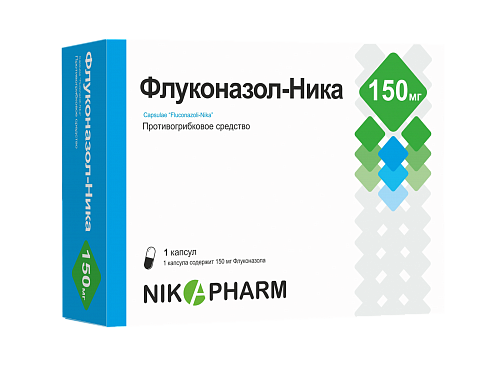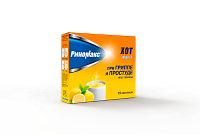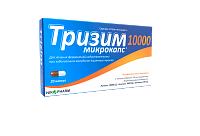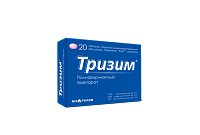Indications
- cryptococcosis, including cryptococcal meningitis and infections of other localizations (e.g. lungs, skin), including in patients with normal immune response and AIDS patients, transplant recipients and patients with other forms of immunodeficiency; maintenance therapy to prevent recurrence of cryptococcosis in AIDS patients;
- generalized candidiasis, including candidemia, disseminated candidiasis and other forms of invasive candidal infection, such as infections of the peritoneum, endocardium, eyes, respiratory and urinary tracts, including in patients with malignant tumors, in intensive care units and receiving cytotoxic or immunosuppressive agents, as well as in patients with other factors predisposing to the development of candidiasis;
- candidiasis of mucous membranes, including mucous membranes of the oral cavity and pharynx, esophagus, non-invasive bronchopulmonary infections, candiduria, cutaneous mucous and chronic atrophic oral candidiasis (associated with wearing dentures), including in patients with normal and suppressed immune function; prevention of recurrence of oropharyngeal candidiasis in patients with AIDS;
- genital candidiasis; acute or recurrent vaginal candidiasis; prophylaxis to reduce the frequency of recurrent vaginal candidiasis (3 or more episodes per year); candidal balanitis;
- prevention of fungal infections in patients with malignant tumors predisposed to such infections as a result of cytotoxic chemotherapy or radiation therapy;- generalized candidiasis, including candidemia, disseminated candidiasis and other forms of invasive candidal infection, such as infections of the peritoneum, endocardium, eyes, respiratory and urinary tracts, including in patients with malignant tumors, in intensive care units and receiving cytotoxic or immunosuppressive agents, as well as in patients with other factors predisposing to the development of candidiasis;
- candidiasis of mucous membranes, including mucous membranes of the oral cavity and pharynx, esophagus, non-invasive bronchopulmonary infections, candiduria, cutaneous mucous and chronic atrophic oral candidiasis (associated with wearing dentures), including in patients with normal and suppressed immune function; prevention of recurrence of oropharyngeal candidiasis in patients with AIDS;
- genital candidiasis; acute or recurrent vaginal candidiasis; prophylaxis to reduce the frequency of recurrent vaginal candidiasis (3 or more episodes per year); candidal balanitis;
- mycoses of the skin, including mycoses of the feet, body, groin, pityriasis, onychomycosis, and cutaneous candidal infections;
- deep endemic mycoses in patients with normal immunity, coccidioidomycosis, paracoccidioidomycosis, sporotrichosis and histoplasmosis.
Information on proper use
How to use and dosage
Inside. The capsules are swallowed whole.
Therapy may be started until results of cultures and other laboratory tests are available. However, antifungal therapy should be modified accordingly when the results of these tests become known.
If the patient is transferred from intravenous to oral administration of the drug or vice versa, no change in the daily dose is required.
The daily dose of FLUCONAZOL-NIKA depends on the nature and severity of fungal infection. In vaginal candidiasis in most cases a single administration of the drug is effective. In infections requiring repeated administration of the drug, treatment should be continued until disappearance of clinical or laboratory signs of active fungal infection. Patients with AIDS and cryptococcal meningitis or recurrent oropharyngeal candidiasis usually require maintenance therapy to prevent recurrent infection.
Use in adults
1. In cryptococcal meningitis and cryptococcal infections of other localization, 400 mg is usually used on the first day, and then continue treatment at a dose of 200-400 mg once a day. The duration of treatment of cryptococcal infections depends on the presence of clinical and mycologic effects; in cryptococcal meningitis, treatment is usually continued for at least 6-8 weeks. For the prevention of recurrence of cryptococcal meningitis in AIDS patients, after completion of the full course of primary treatment, therapy with FLUCONAZOL-NICA at a dose of 200 mg/day can be continued for a very long period of time.
2. In candidemia, disseminated candidiasis and other invasive candidal infections, the dose is usually 400 mg on the first day, followed by 200 mg/day. Depending on the severity of clinical effect, the dose can be increased up to 400 mg/day. Duration of therapy depends on clinical efficacy.
3. In oropharyngeal candidiasis the drug is usually used 50-100 mg once a day for 7-14 days. If necessary, in patients with marked suppression of immune function, treatment can be continued for a longer period of time. In atrophic oral candidiasis associated with wearing dentures, the drug is usually used in a dose of 50 mg once a day for 14 days in combination with topical antiseptic agents for denture treatment.
In other candidal infections of mucous membranes (except genital candidiasis, see below), e.g. esophagitis, non-invasive bronchopulmonary infections, candiduria, candidiasis of skin and mucous membranes, etc., the effective dose is usually 50-100 mg/day with treatment duration of 14-30 days.
To prevent recurrence of oropharyngeal candidiasis in AIDS patients after completion of a full course of primary therapy with fluconazole, 150 mg once a week can be used.
4. In vaginal candidiasis fluconazole is used once orally in a dose of 150 mg. To reduce the frequency of recurrences of vaginal candidiasis, the drug can be used in a dose of 150 mg once a week. Duration of antiretroviral therapy is determined individually, and, as a rule, is 6 months. Administration of a single dose to children from 3 to 18 years old and patients over 60 years old without a doctor's prescription is not recommended.
In balanitis caused by Candida spp. fluconazole is used once in a dose of 150 mg orally.
5. For prophylaxis of candidiasis in patients with malignant tumors, the recommended dose of FLUCONAZOLNIKA is 50-400 mg once daily, depending on the risk of fungal infection. For patients at high risk of generalized infection, such as those with severe or prolonged neutropenia, the recommended dose is 400 mg once daily. Fluconazole is administered a few days before the expected development of neutropenia and, after an increase in neutrophil count of more than 1000 neutrophils per mm3, treatment is continued for an additional 7 days.
6. For skin infections, including mycoses of the feet, smooth skin, inguinal region and candidal infections, the recommended dose is 150 mg once weekly or 50 mg once daily. The duration of therapy is usually 2-4 weeks, but longer therapy (up to 6 weeks) may be required for mycoses of the feet.
In case of pityriasis, the recommended dose is 300 mg once a week for 2 weeks; some patients require a third dose of 300 mg per week, while for some patients a single dose of 300-400 mg is sufficient. An alternative treatment regimen is the use of the drug 50 mg once daily for 2-4 weeks.
In onychomycosis the recommended dose is 150 mg once a week. Treatment should be continued until replacement of infected nail (growth of non-infected nail).
Toe and foot nails usually take 3-6 months and 6-12 months to re-grow, respectively. However, the rate of growth can vary widely from person to person and also from age to age. Changes in nail shape are sometimes observed after successful treatment of long-standing chronic infections.
7. Deep endemic mycoses may require administration of the drug at a dose of 200-400 mg/day. Therapy may last up to 2 years. Duration of therapy is determined individually; it is 11-24 months for coccidioidomycosis, 2-17 months for paracoccidioidomycosis, 1-16 months for sporotrichosis and 3-17 months for histoplasmosis.
Use in children
As with similar infections in adults, the duration of treatment depends on the clinical and mycologic effect. For children, the daily dose of the drug should not exceed that for adults. Fluconazole is used daily once a day.
In candidiasis of mucous membranes the recommended dose of the drug FLUCONAZOL-NIKA is 3 mg/kg/day. On the first day, in order to achieve equilibrium concentration more quickly, a shock dose of 6 mg/kg can be used.
For the treatment of generalized candidiasis and cryptococcal infection, the recommended dose is 6-12 mg/kg/day depending on the severity of the disease.
For suppression of relapse of cryptococcal meningitis in children with AIDS, the recommended dose of FLUCONAZOL-NIKA is 6 mg/kg/day.
For prophylaxis of fungal infections in immunocompromised patients, in whom the risk of infection development is associated with neutropenia that develops as a result of cytotoxic chemotherapy or radiation therapy, the drug is administered at a dose of
3-12 mg/kg/day depending on the severity and duration of persistence of induced neutropenia (see dose for adults; for children with renal insufficiency - see dose for patients with renal insufficiency).
In case of impossibility of proper use in children of the dosage form of the drug FLUCONAZOL-NIKA in the form of capsules, the possibility of replacement by other dosage forms of the drug (powder for preparation of suspension for oral administration or solution for intravenous administration) in equivalent doses should be considered.
Use in elderly people
In the absence of signs of renal insufficiency fluconazole is used in the usual dose. In patients with renal insufficiency (creatinine clearance <50 ml/min) the drug dose is adjusted as described below.
Use in patients with renal insufficiency
No dose adjustment is required for a single dose. In patients (including children) with impaired renal function in case of repeated administration of the drug it is necessary to initially administer an impact dose from 50 mg to 400 mg, after which the daily dose (depending on the indication) is set according to the following table: (refer to the instructions).
Patients on regular dialysis should receive 100% of the recommended dose after each dialysis session. On the day when dialysis is not performed, patients should receive a reduced (depending on creatinine clearance) dose of the drug.






